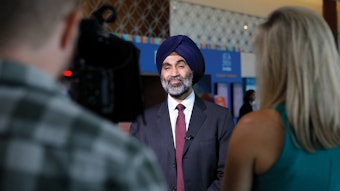Guidelines offer new directions in urological care
From menopause management to kidney cancer surveillance, AUA2025 unveiled pivotal updates to clinical guidelines that promise to reshape urological practice.

AUA2025 showcased several significant guideline updates, offering urologists fresh insights into patient care. Here's a summary of the key developments.
Addressing genitourinary syndrome of menopause (GSM)
The American Urological Association (AUA), in collaboration with the Society of Urodynamics, Female Pelvic Medicine & Urogenital Reconstruction (SUFU) and American Urogynecologic Society (AUGS), introduced comprehensive guidelines for diagnosing and treating GSM—a condition affecting up to 70% of menopausal women, yet often underdiagnosed. Dr. Melissa R. Kaufman emphasized the transformative nature of these guidelines. “It’s transformational for the AUA to have embarked upon this tremendous initiative, and I am absolutely convinced it will be an incredible service for many patients,” she said. The guidelines advocate for shared decision-making and multidisciplinary approaches, focusing on both hormonal and non-hormonal treatments.
Navigating urethral stricture management
The Crossfire: Controversies in Urology: Battle of the Guidelines session delved into the nuances of urethral stricture management, comparing guidelines from the AUA, the European Association of Urology (EAU) and the Urological Society of India (USI). Dr. Kenneth Angermeier highlighted key differences, noting, “There are a few major differences, controversies or opposing views among the three published sets of guidelines.” Discussions covered treatment options, including urethroplasty and endoscopic treatments, and emphasized the importance of accurate diagnosis and individualized care plans.
Optimizing kidney cancer surveillance
In a State-of-the-Art Lecture, Dr. Brian R. Lane presented findings from the Michigan Urological Survey Improvement Collaborative (MUSIC)-KIDNEY initiative, which analyzed data from over 7,000 cases to refine follow-up strategies post-nephrectomy. The study revealed that 30% of recurrences occur beyond the five-year surveillance window recommended by some guidelines. “Despite a bias toward ‘individualized’ follow-up plans, a consistent and unified surveillance strategy emerged through consideration of individual patient scenarios,” Dr. Lane said.
Updating vasectomy guidelines
Dr. Akanksha Mehta led a panel on the Plenary stage discussing forthcoming updates to vasectomy guidelines, addressing shifts in societal attitudes and technological advancements. The new guidelines will cover topics such as post-vasectomy fertility options and the use of at-home semen analysis kits. “As reproductive choices become more complex, we are going to see more and more patients lean toward getting a vasectomy. We have to be mindful of these changing trends,” Dr. Mehta said.











